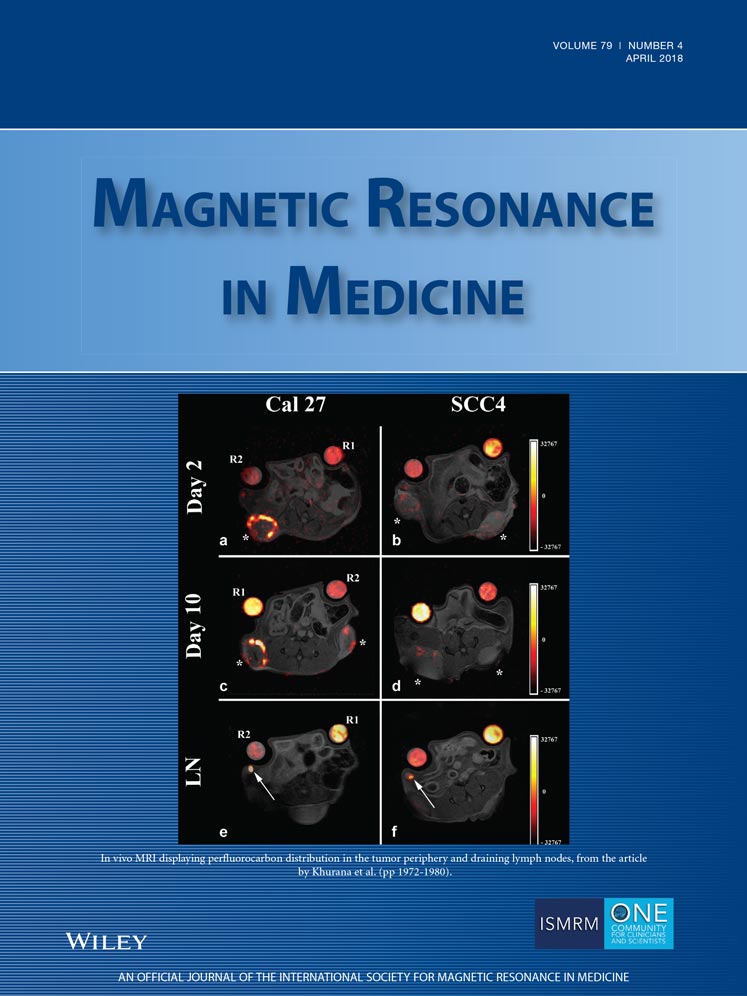A chemical shift encoding (CSE) approach for spectral selection in fluorine-19 MRI
Abstract
Purpose
To develop a chemical shift encoding (CSE) approach for fluorine-19 MRI of perfluorocarbons in the presence of multiple known fluorinated chemical species.
Theory and Methods
A multi-echo CSE technique is applied for spectral separation of the perfluorocarbon perfluoro-15-crown-5-ether (PFCE) and isoflurane (ISO) based on their chemical shifts at 4.7 T. Cramér-Rao lower bound analysis is used to identify echo combinations with optimal signal-to-noise performance. Signal contributions are fit with a multispectral fluorine signal model using a non-linear least squares estimation reconstruction directly from k-space data. This CSE approach is tested in fluorine-19 phantoms and in a mouse with a 2D and 3D spoiled gradient-echo acquisition using multiple echo times determined from Cramér-Rao lower bound analysis.
Results
Cramér-Rao lower bound analysis for PFCE and ISO separation shows signal-to-noise performance is maximized with a 0.33 ms echo separation. A linear behavior (R2 = 0.987) between PFCE signal and known relative PFCE volume is observed in CSE reconstructed images using a mixed PFCE/ISO phantom. Effective spatial and spectral separation of PFCE and ISO is shown in phantoms and in vivo.
Conclusion
Feasibility of a gradient-echo CSE acquisition and image reconstruction approach with optimized noise performance is demonstrated through fluorine-19 MRI of PFCE with effective removal of ISO signal contributions. Magn Reson Med 79:2183–2189, 2018. © 2017 International Society for Magnetic Resonance in Medicine.




